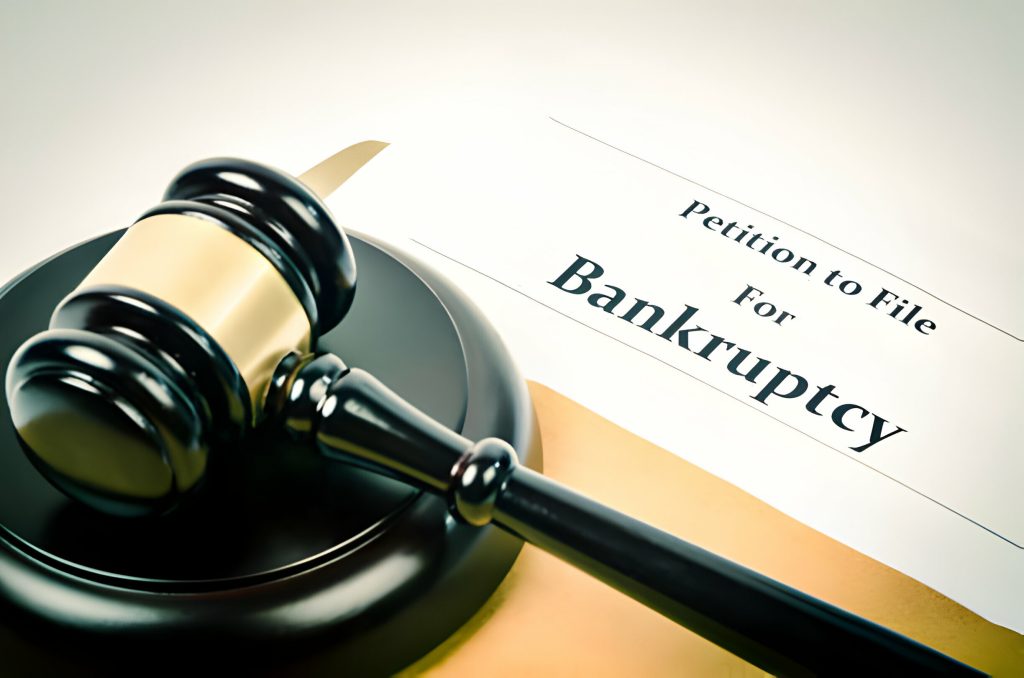Have you ever wondered what life looks like 10 years after bankruptcy? In this article, we will explore the process of rebuilding your credit and creditworthiness, the impact on future loan applications, the long-term effects on employment opportunities, and how to reestablish financial stability. We’ll also discuss changes in spending habits and financial management, potential limitations on housing options, and rebuilding relationships with lenders and creditors. Finally, we’ll delve into the emotional and psychological impact of bankruptcy recovery.
Rebuilding Credit and Creditworthiness
Start rebuilding your credit and improving your creditworthiness within 10 years after filing for bankruptcy. Rebuilding credit after bankruptcy is not an easy task, but it is crucial for your financial future. The good news is that it is possible to regain a positive credit standing over time.
First and foremost, it is important to understand the factors that impact your credit score. Payment history, amounts owed, length of credit history, new credit, and types of credit used all play a role in determining your creditworthiness. By focusing on these areas, you can gradually rebuild your credit.
One strategy is to start by obtaining a secured credit card. These cards require a cash deposit as collateral and can be a valuable tool in rebuilding your credit. Make small purchases and pay off the balance in full each month to demonstrate responsible credit behavior.
In addition, consider becoming an authorized user on someone else’s credit card. This allows you to piggyback off their positive credit history and can help boost your own credit score.
Furthermore, it is crucial to pay all your bills on time. Late payments can have a significant negative impact on your credit score. Set up automatic payments or reminders to ensure you never miss a due date.
Lastly, avoid taking on too much new credit at once. Opening multiple new accounts can raise red flags for lenders and potentially harm your credit score. Instead, focus on using and managing your existing credit responsibly.
Impact on Future Loan Applications
When applying for future loans, your bankruptcy history can have a significant impact on your eligibility and terms. Lenders consider bankruptcy as a red flag, signaling a higher risk of default. As a result, they may be hesitant to approve your loan application or offer less favorable terms.
One of the main ways bankruptcy affects future loan applications is by lowering your credit score. Bankruptcy stays on your credit report for up to 10 years, and during this time, it can be challenging to rebuild your creditworthiness. Lenders rely heavily on credit scores to assess an individual’s creditworthiness, and a low score can lead to higher interest rates or even loan denial.
Moreover, even after the bankruptcy falls off your credit report, some lenders may still inquire about your past financial troubles. They may ask you to provide additional documentation or explanations regarding the bankruptcy. This scrutiny can make the loan application process more time-consuming and stressful.
To improve your chances of getting approved for future loans, it is crucial to take steps to rebuild your credit after bankruptcy. This can include making timely payments on any remaining debts, applying for a secured credit card, and maintaining a low credit utilization ratio.
Long-Term Effects on Employment Opportunities
Your bankruptcy history can continue to impact your employment opportunities for years after the bankruptcy is discharged. Employers often conduct background checks and consider an applicant’s financial history as part of the hiring process. While bankruptcy itself may not automatically disqualify you from employment, it can still raise concerns for potential employers.
One of the long-term effects of bankruptcy on employment opportunities is the perception of financial irresponsibility. Employers may view bankruptcy as a sign that you are unable to manage your finances effectively, which can be seen as a red flag for positions that require financial responsibility or trust. Additionally, bankruptcy may also indicate a lack of stability or reliability, which can make employers hesitant to hire you.
Another way bankruptcy can impact your employment opportunities is through credit checks. Many employers now run credit checks as part of their hiring process, especially for jobs that involve handling sensitive financial information or require a security clearance. A bankruptcy on your credit report can be seen as a negative factor, potentially raising concerns about your ability to handle financial responsibilities.
Furthermore, bankruptcy can also affect your ability to obtain professional licenses or certifications in certain industries. Some licensing boards or professional organizations may have specific rules or regulations regarding bankruptcies, which can impact your eligibility for certain positions or advancements within your field.
Reestablishing Financial Stability
To reestablish financial stability after bankruptcy, take proactive steps to rebuild your credit and improve your financial standing. It may seem daunting, but with a strategic plan and discipline, you can regain control of your finances. Here are three important actions you can take to get back on track:
- Create a budget: Start by assessing your income and expenses. This will help you understand where your money is going and identify areas where you can cut back. Set realistic goals and stick to them. By living within your means, you can gradually reduce debt and start saving.
- Build an emergency fund: Having a safety net is crucial to avoid falling into financial hardship again. Aim to save at least three to six months’ worth of living expenses. This fund will provide a buffer in case of unexpected expenses or income loss.
- Rebuild your credit: Begin by obtaining a secured credit card, where you make a deposit that becomes your credit limit. Make consistent, on-time payments to establish a positive payment history. Gradually, you can qualify for unsecured credit cards and other types of loans, demonstrating your ability to manage credit responsibly.
Changes in Spending Habits and Financial Management
After 10 years, it’s important to reassess and make changes to your spending habits and financial management. By this time, you should have made significant progress in rebuilding your financial stability after bankruptcy. Now is the time to take a closer look at your spending habits and make adjustments to ensure long-term financial success.
To help you in this process, here is a table outlining key areas to focus on:
| Aspect of Financial Management | Current Status | Desired Change |
|---|---|---|
| Budgeting | Sporadic | Consistent |
| Saving | Negligible | Regular |
| Debt Management | Ongoing | Debt-free |
First and foremost, it’s crucial to establish a consistent budget. This will allow you to track your income and expenses more effectively and make informed decisions about where your money is going. Additionally, prioritize saving regularly to build an emergency fund and work towards achieving financial goals.
Managing debt is another crucial aspect to address. While it may take time to pay off all existing debts, focus on creating a plan to systematically eliminate them. This may involve negotiating lower interest rates or seeking professional advice.
Ultimately, after 10 years, it’s important to reassess your spending habits and financial management to continue on a path of financial stability and success. By making these changes, you can ensure a brighter financial future for yourself.
Potential Limitations on Housing Options
One potential limitation on housing options 10 years after bankruptcy is the impact on your credit score. After a bankruptcy, your credit score is likely to take a significant hit, making it more difficult to secure a mortgage or obtain favorable terms on a rental agreement. Here are three ways in which a low credit score can limit your housing options:
- Limited access to loans: With a low credit score, traditional lenders may be hesitant to approve your mortgage application. You may have to seek alternative financing options, such as subprime lenders or government-backed loans, which often come with higher interest rates and less favorable terms.
- Higher security deposits: Landlords may view a low credit score as an indicator of financial instability and may require a higher security deposit to mitigate their risk. This can make it challenging to move into a new rental property, as you may need to come up with a larger sum of money upfront.
- Difficulty in finding suitable housing: Some landlords and property management companies conduct credit checks as part of their tenant screening process. A low credit score may result in rejections or limited options, making it harder to find suitable housing in desirable areas.
It is important to note that these limitations can vary depending on individual circumstances and local housing markets. Working on improving your credit score and demonstrating financial responsibility can help overcome these limitations over time.
Rebuilding Relationships With Lenders and Creditors
You can rebuild your relationships with lenders and creditors by taking proactive steps to rebuild your credit and demonstrate financial responsibility. Rebuilding these relationships is crucial for your financial future, as it allows you to access credit and loans at favorable terms. Here are some steps you can take to rebuild those relationships:
| Steps to Rebuild Relationships with Lenders and Creditors |
|---|
| Pay your bills on time |
| This shows lenders and creditors that you are responsible and can be trusted to make timely payments. |
| Reduce your debt |
| By paying down your debt, you show lenders and creditors that you are managing your finances well and can handle additional credit responsibly. |
| Establish new credit lines |
| Opening new credit accounts can help demonstrate financial responsibility, but be cautious not to take on too much new debt. |
| Monitor your credit report |
| Regularly reviewing your credit report allows you to identify any errors or fraudulent activity and take steps to address them. |
| Communicate with lenders and creditors |
| If you are facing financial difficulties, it is important to reach out to your lenders and creditors to discuss possible solutions. Being proactive and showing a willingness to work together can help rebuild trust and improve your relationships. |
Emotional and Psychological Impact of Bankruptcy Recovery
As you navigate the journey of bankruptcy recovery, the emotional and psychological impact can significantly shape your financial future. It is important to recognize and address the emotional and psychological aspects of bankruptcy recovery in order to move forward and rebuild your life. Here are three key ways in which the emotional and psychological impact of bankruptcy recovery can affect you:
- Stress and Anxiety: Bankruptcy can bring about a great deal of stress and anxiety. The fear of financial instability and the uncertainty of the future can weigh heavily on your mind. It is important to find healthy ways to manage and cope with these emotions, such as seeking support from loved ones or seeking professional help.
- Self-esteem and Confidence: Bankruptcy can have a negative impact on your self-esteem and confidence. The feeling of failure and the stigma associated with bankruptcy can make you doubt your abilities and worth. It is important to remember that bankruptcy is not a reflection of your personal worth, and to focus on rebuilding your self-esteem and confidence.
- Financial Habits and Behaviors: Bankruptcy can also impact your financial habits and behaviors. It is crucial to evaluate and reflect on the financial decisions that led to bankruptcy, and to make necessary changes in your spending and saving habits. Developing healthy financial habits and behaviors will not only help you in the present, but also in the long-term as you work towards financial stability.





